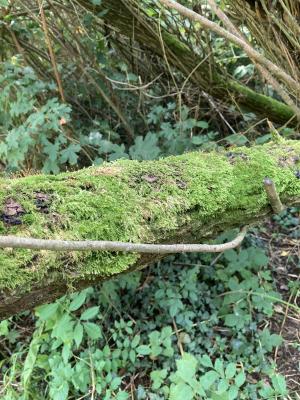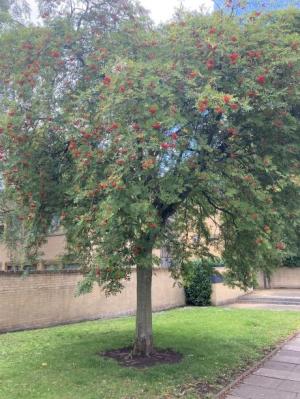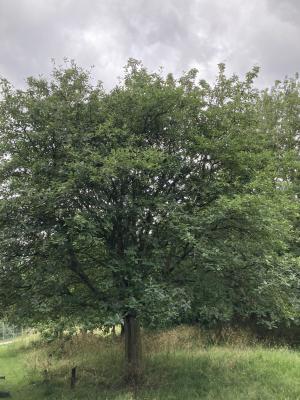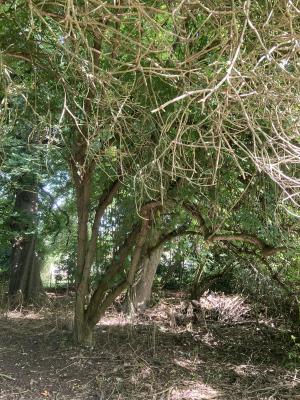Our Tree Collection
Salix viminalis is a multistemmed shrub growing to between 9 to 18 ft tall. It has long, erect, straight branches with greenish-grey bark. The leaves are long and slender, 4 to 10 in long but less than 1 in wide. They are dark green above, with a silky grey-haired underside.
The flowers are catkins, produced in early spring before the leaves. They are dioecious, meaning male and female catkins are found on separate plants. The male catkins are yellow and oval-shaped; the female catkins are longer and more cylindrical; they mature in early summer when the fruit capsules split open to release the numerous minute seeds.
Basket Osier is commonly found by streams and in other wet places. The exact native range is uncertain, but it is certainly native from central Europe east to western Asia, but may also be native as far west as southeastern England. As a cultivated or naturalised plant, it is widespread throughout both Britain and Ireland, but only at lower altitudes.
Along with other related willows, the flexible twigs (called withies) are commonly used in basketry, giving rise to its alternative common name of "basket willow". Cultivation and use of the 'Common Osier' was frequent in England in the 18th and 19th century, with osier beds lining many rivers and streams.
Sorbus aucuparia occurs as a tree or shrub that grows up to 16 to 48 feet in height. The crown is loose and may be roundish or irregularly shaped but is wide. This plant often grows multiple trunks. Each trunk is slender and cylindrical and reaches up to 15 inches in diameter. The branches stick outward and slant upwards.
The bark of a young plant is yellowish gray and gleaming. In maturity it becomes gray-black with lengthwise cracks appearing in old age. The plant does not often live beyond 80 years and therefore is one of the shortest-lived trees found in the temperate climate. The wood has a wide reddish white sapwood and a light brown to reddish brown heartwood. The roots of the tree grow wide and deep, and the plant is capable of root sprouting and can regenerate after coppicing.
The leaves are compound with 4 to 9 pairs of leaflets on either side of a central vein and with a terminal leaflet. The leaflets are covered in gray-silvery hairs after sprouting but become mostly bare after they unfold. Their upper side is dark green and their underside is a grayish green and felted. The foliage grows in May and turns yellow in autumn or a dark red in drier locations.
Its berries come in round pomes and are between 8 and 10 mm in diameter. They ripen from August to October. The fruit start off green before they ripen and then typically turn to orange or scarlet in colour.
Sorbus intermedia is a medium-sized deciduous tree growing between 30 to 60 feet tall with a stout trunk up to 2 feet in diameter. The bark is grey and the crown is dome-shaped, with stout horizontal branches.
The leaves are green above, and densely hairy with pale grey-white hairs beneath. They have four to seven deep oval lobes on each side of the leaf, broadest near the middle, rounded at the apex, and finely serrated margins. The autumn colour is dull yellowish to grey-brown. The flowers are 15-20 mm in diameter, with five white petals and 20 yellowish-white stamens.
The fruit is an oval pome, orange-red to red, maturing in mid autumn. It is a dryish fruit and eaten by thrushes and waxwings, which thus disperse the seeds.
Yews are small to medium-sized evergreen trees, growing 35 to 65 feet tall, with a trunk up to 6 foot in diameter. The bark is thin, scaly brown, and comes off in small flakes aligned with the stem. The leaves are flat, dark green, 1 to 4 centimetres long, 2 to 3 mm broad, and arranged spirally on the stem, but with the leaf bases twisted to align the leaves in two flat rows on either side of the stem.
The seed cones are modified, each cone containing a single seed, which is 4 to 7 mm long, and partly surrounded by a fleshy scale which develops into a soft, bright red berry-like structure called an aril. The aril is 8 to 15 mm long and wide and open at the end. The arils mature 6 to 9 months after pollination, and with the seed contained, are eaten by thrushes, waxwings and other birds, which disperse the hard seeds undamaged in their droppings. Maturation of the arils is spread over 2 to 3 months, increasing the chances of successful seed dispersal.
The seeds themselves are poisonous and bitter, but are opened and eaten by some bird species, including hawfinches, greenfinches, and great tits. The aril is not poisonous and is gelatinous and very sweet tasting.
Apart from the smallness of it's leaves, which only reach 2.5 inches long, this species of lime can be readily recognised from the way it's little greenish-yellow flowers starnd erect or at various angles on their bracts, rather than hanging down. The flowers appear in early July.
It's smooth grey bark cracks into shallow plates. The fruits are neither ribbed nor hairy as with the other limes. It is the first of the limes to flower and is very popular with the bee population. The leaves are alternate and hairy on the underside.
Full-bodied and as stately as galleon, the common lime cn live for as long as 500 years. It is probably the tallest broad-leaved tree in Britain, familiar in our streets and distinguished by the bushy side-shoots that start from near to the ground.
The bark is smooth and dull grey when young, becoming distinctively fissured when older. The dull green leaves can grow up to 4 inches long and often bear the tiny red pimples of nail gall blight. In summer, greenfly on the leaves drop a stick honeydew.
The leaves are alternate and fine-toothed. They have a straight base and hairs in the vein junctions. The leaf-stalk is hairless. Sweetly-scented flowers appear in July, hanging from long leaf-like bracts.







